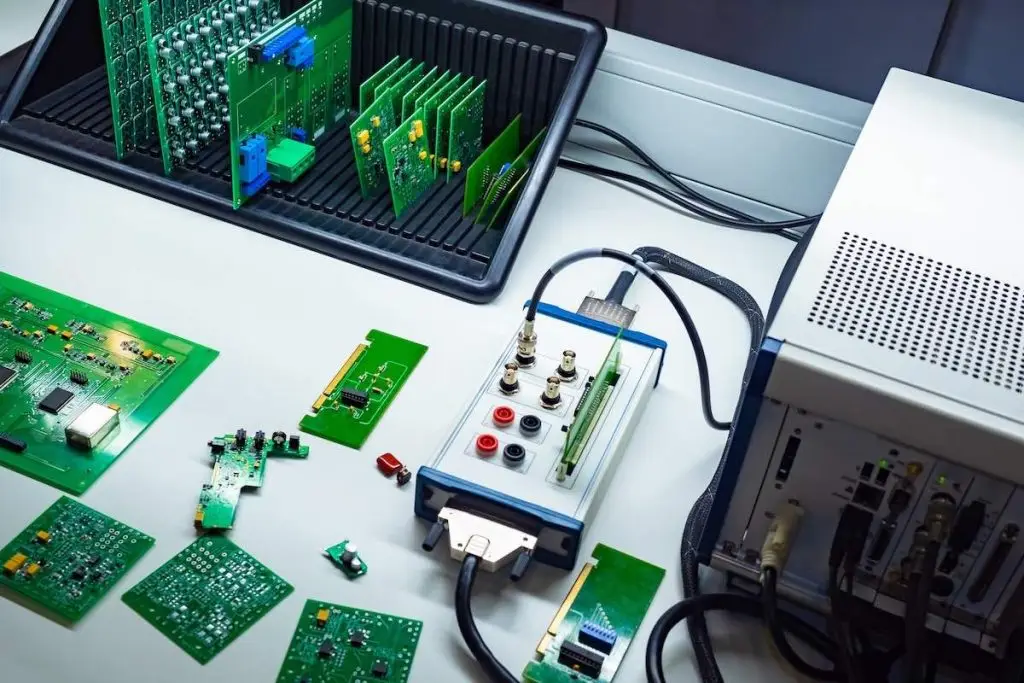In PCB manufacturing, repeatability and consistent quality are critical – whether for large-scale production, small batches or prototypes.
Skilled and experienced technicians can and do create excellent work, but relying on individuals to establish, deliver and sustain top-quality results is risky. Programming Automatic Inspection Machines and processes is expensive, time-consuming and not always practicable, especially when prototyping.
Prototype QC needs to ensure that the design will work; that it is safe, and meets certain standards of quality and reliability; that it performs to expectations; and that it addresses its purpose.
Small batch PCBs have some rather unique attributes:
- High Mix, Low Volume (HMLV). It’s likely that the PCB manufacturer builds several board designs in this environment to ensure efficient use of their production infrastructure.
- Higher performance, reliability and quality requirements. Small batch and prototype PCBs are often intended for critical applications where more stringent IPC standards apply, like aerospace, automotive safety or medical devices. Quality and reliability expectations can be significantly higher for these critical system applications.
- Complex designs. Prototypes are created to solve specialized and often complicated challenges, which means their designs are complex, requiring atypical manufacturing processes
How to ensure the best quality standards for prototypes and small batches
- In-circuit testing (ICT). Provides a reliable, high-fault coverage verification method for the majority of PCB assembly electronic components that’s free of human error. It’s great for big assemblies or ball grid arrays and after assembly.
- Short circuit testing. The main cause of PCB prototype defects is a short circuit between its larger components. For example, a fastener between two proximate pins can damage the microcontroller by triggering a short. It is vital to gauge the impedance each voltage node to the ground. Faulty components or incorrect soldering can cause components to overheat.
- Flying probe test. A practical, cost-effective technique for prototypes and small batches that tests PCB probes from one spot to another, looking for singular issues in the circuit – shorts, capacitance, resistance, inductance, opens and problems with diodes.
- x-ray inspection. As the prototype is being manufactured, an x-ray technician runs tests to locate defects, looking for elements that may be hard to discern with the naked eye – for example, joined connections, internal traces or barrels.
- Functional testing. The #1 criterion for a prototype’s success is, “Does it work?” Performing a functional test requires the parameters for ‘success’ to be clearly defined. Functional testing takes a long time, because it simulates the real-life environment in which the prototype is expected to work. But in terms of long-term value, it’s worth doing. A great deal of money and time can be saved by identifying potential operational pitfalls and eliminating them at the design stage.
- Burn-in testing. Intended to identify failures early and initiate load capacity. Burn-in testing helps identify potential dangers relating to power being pushed through the electronic components for extended periods of time. One must keep in mind that individual prototypes may be partially or even completely damaged by a rigorous burn-in test, and the test’s utility to prototype QC should be decided based on the destination application of the PCB.
- Automated optical inspection testing (AOI). Camera-based visual inspection to identify issues that may emerge on the board during the preliminary phase of assembly. It’s wisest not to rely entirely on AOI, but to complement it with an ICT or flying probe for more accurate QC results.
- Inverted polarity testing. The more manual assembly, the higher the risk of human error. The simple act of ensuring that each individual component is set up based on its polarity can prevent the complex and delicate components of your prototype being badly damaged. Protection diodes can protect PCBs but add to their power consumed.
- Populated components testing. A simple BOM cross-check to ensure that the components selected fit the board design can save investigative time and effort later in the process.
Several other QC approaches, including tests for PCB contamination, solderability and peeling; micro-sectioning analysis; and time-domain reflectometers, can identify faults or be used in combination with those discussed above, like ICTs and flying probes.
Choose the right QC test(s) for your prototype
It begins with clearly defining the purpose and desired performance levels of the PCB; weighing the pros and cons of the available tests – which include costs, time required, destructive vs. non-destructive; and always keeping in mind, especially when prototyping, that the design-test loop can flex and adapt as the product design is iteratively perfected.
It’s always a good idea to partner with a manufacturer who is committed to the best quality; has documented and traceable processes; has the necessary quality and classification standard certifications; is experienced at HMLV manufacturing; and leverages technology to ensure high-quality, repeatable results.
Podrain collaborates closely with its clients when prototyping and producing small batches, and meets the highest quality and classification standards. We advise clients on the right mix of testing to ensure that their prototype PCBs meet the final test of quality – sustained, reliable, top-level performance in the field.


